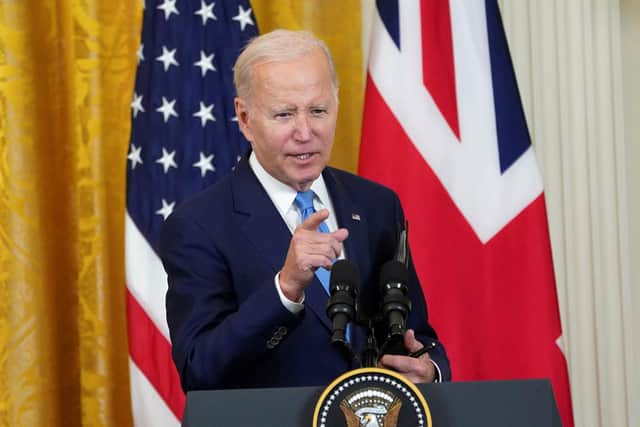Joe Biden's export controls raise questions for microchip giants: James Eades
These controls, initially implemented in October 2022, are aimed at creating significant hurdles for China’s development of various cutting-edge technologies which could be used in areas including research for military weapons and wider government projects.
This move, however, casts a shadow of uncertainty over some of the world’s largest chip companies, including Nvidia and AMD.
Advertisement
Hide AdAdvertisement
Hide AdThese industry giants boast substantial revenue ties with China, rendering them vulnerable to the potential consequences of the new export controls.


Therefore, rather unsurprisingly, the markets reacted with a tinge of pessimism as the share prices of both companies tumbled in response.
However, this is not Nvidia’s first encounter with export restrictions.
When previous restrictions had been enforced, the company adapted by creating a lower-spec chip tailored specifically for the Chinese market.
Advertisement
Hide AdAdvertisement
Hide AdIf the impending regulations take effect, even this workaround may prove difficult without the required licensing.


While we are yet to see any official reports from President Biden’s administration, the impacts of these decisions could loom large across global financial markets and create a sense of uncertainty in the realm of international affairs.
Nationally, Chancellor Jeremy Hunt has voiced concerns that banks are dragging their feet when it comes to passing these increased savings rates onto savers while ensuring swift repayment increases for mortgage holders.
Although savings rates and mortgages are not directly correlated, the disparity between the average mortgage and savings rates has reached its widest point since December 2021 at the time of the Bank of England’s first interest rate raise in the current uptick.
Advertisement
Hide AdAdvertisement
Hide AdBack in 2021, the difference between the average two-year fixed mortgage rate of 2.38 per cent and a typical savings account rate of 0.19 per cent was 2.19 per cent.
However, as of June 26, the gap was considerably wider, with the average two-year mortgage rate surging to 6.23 per cent, while the typical savings account offered a modest 2.36 per cent, resulting in a wider gap of 3.87 per cent.
This glaring discrepancy likely highlights the growing frustration felt by Mr Hunt. Yet, many banks argue that a considerable portion of fixed-rate mortgages in the UK were secured at lower costs compared to today.
Consequently, as the bank rate rises, these mortgage holders continue to enjoy the benefits of the lower rates, leaving banks with little room to manoeuvre and pass on higher savings rates to protect their margins.
Advertisement
Hide AdAdvertisement
Hide AdLocally, AIM stock and Sheffield-based industrial manufacturing firm Pressure Technologies has reported a change in trading conditions in its recent interim results after winning a new defence contract. The designer and manufacturer of high-pressure systems used in the global energy, defence and industrial gas sectors gave a new report in June, noting that for the first half of 2023 the continued recovery of the oil and gas market, combined with a backdrop of more resilient economic conditions, could be a positive sign for the sector overall, especially given the challenging landscape seen in 2022.
James Eades is a member of the Investment Research Team at Redmayne Bentley